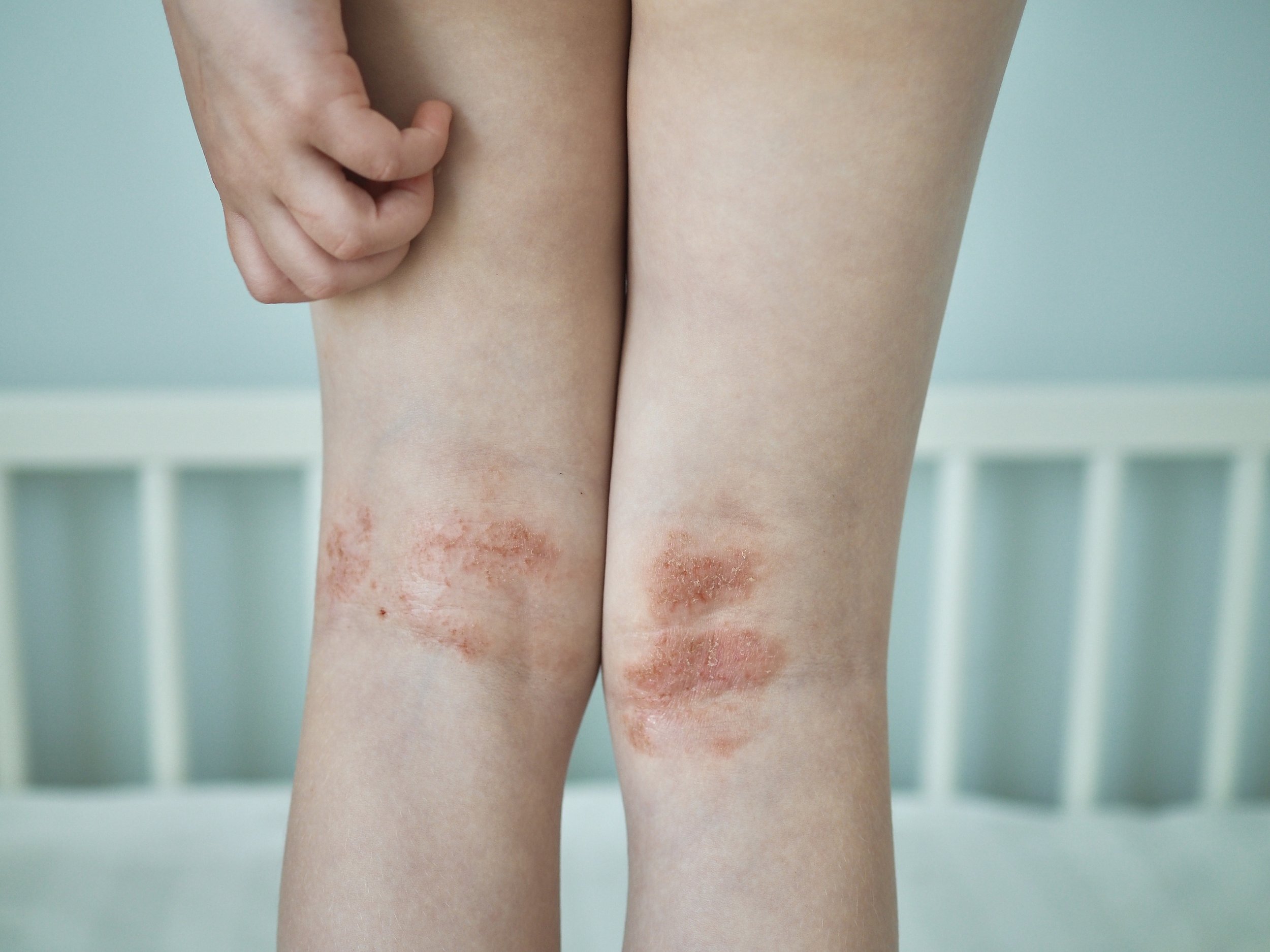Atopic Dermatits (Eczema)
Atopic dermatitis (eczema in Greek) is a very common skin condition that causes a chronic itchy, red rash, typically appearing on the flexural areas of the limbs (the inner elbows, wrists and back of the knees). However, it can also affect the whole body. It starts, for most patients, in infancy, affecting 10-20% of infants with a rash usually on the cheeks. As the infant grows, the rash spreads to the typical locations on the limbs. In severe cases, the eczema can involve large areas of the body including head and neck, nappy area, scalp and torso. Most of the paediatric patients will grow out of the dermatitis, but about 1-3% will have a persistent dermatitis, widespread, or more localized, causing chronic hand or eyelid eczema.
The cause of atopic eczema is not fully understood, but it is most probably a combination of several factors. The first, is an allergic tendency. Most of the patients or their family members will have other allergic conditions such as dust mite allergy, asthma, hay fever or food allergy. The second, is a defect in the barrier qualities of the skin. This causes increased water evaporation from the skin, which in turn causes a dry skin that does not serve as a good barrier from allergens. The allergens penetrate more easily into the skin, promoting an immune reaction which manifests as a red, itchy, dry skin.
The eczema can flare up after exposure to allergens, emotional stress and environmental factors. It decreases the quality of life with an intense itch, that disrupts sleep quality and may impact the daily activities of the patient. Patients with eczema are prone to secondary infection by Staph, but viruses can also attack the damaged skin, causing widespread infections of Herpes and multiple lesions of Molluscum contagiosum.
The treatment of eczema has three arms. The first, is to restore the barrier qualities of the skin by using moisturiser frequently, and to avoid further damage to the skin by avoiding strong detergents and allergens. The second, is to control infections, by having courses of antibiotics if needed, and bleach baths, that decrease the load of bacteria on the skin. The third, is to decrease the inflammation. The mainstay of this is by using creams such as steroids. Dr. Sagi will guide you on the types and length of treatment to avoid side effects but on the other hand, to have good effect to the treatment. Systemic immunosuppressive treatments can be considered for severe cases and include light therapy UVB, tablets and injections.

